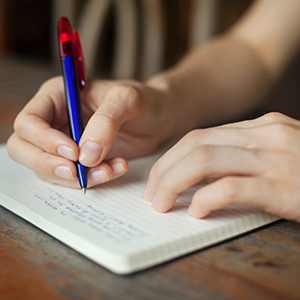Helping Students Improve Their Working Memory

Is it possible that your students’ working memory demands can exceed their working memory capacity?
Working memory is what enables us to hold new information in our minds, apply previously learned information or skills to the new information, and solve problems. Unfortunately, students affected by ADHD can have difficulty holding information in their working memory. Poor working memory leads to inattention for many students.
Susan Gathercole, the director of the Medical Research Council Cognition and Brain Sciences Unit in Cambridge, has studied working memory issues experienced by students and has suggestions for educators to help students improve their working memory.
“Poor working memory, in and of itself, should be considered a significant risk factor for academic problems,” Professor Gathercole says, “regardless of whether it co-occurs with other conditions, such as ADHD.”
Seven Steps for Improving Working Memory
Step 1: Recognize Working Memory Failures. Look for four common signs of working memory overload:
- incomplete recall, as when a student begins writing a sentence then struggles to remember all of the words in the sentence
- failure to follow instructions
- place-keeping errors, apparent when a student keeps losing track of either steps completed or steps yet to be completed and either repeats steps needlessly or constantly has to start over
- task abandonment, a common consequence of the previous errors
Step 2: Monitor the Student. Encourage your student to verbalize the steps for tasks that they often struggle to complete. By saying the steps out loud, the student and teacher can figure out where the breakdown is occurring and what supports are likely to work best.
Step 3: Evaluate the Working Demands of Learning Activities. Identify and change learning tasks that may go beyond a student’s working memory capacity. Look at these three features of learning tasks.
- Length―In the absence of supports, the longer the task and the more steps necessary for its successful completion, the less likely a student with poor working memory will be able to complete it successfully.
- Content―When having to hold unfamiliar or non-meaningful information in mind, the student can’t draw upon previous knowledge as a tool to support working memory. Familiar or meaningful information is much easier to temporarily keep in our mental workspace.
- Mental Processing―Whenever a student is asked to perform a challenging mental activity while simultaneously holding on to information, working memory capacity becomes an issue.
Step 4: Reduce Working Memory Load. The opportunity to repeat a task several times helps make the task more familiar and more likely to be completed successfully. For some students, the task may have to be adapted so that it doesn’t exceed the student’s working memory capacity. Learning tasks can be adapted by reducing the amount of the material, by increasing the meaningfulness of the material, by simplifying the amount of mental processing required, and by restructuring complex tasks.
Step 5: Be Prepared to Repeat. Students with poor working memory benefit from having information repeated and also benefit from visual reminders of the steps needed to complete a task successfully. Sometimes, an understanding classmate sitting alongside the struggling student can also help out.
Step 6: Encourage the Use of Memory Aids. Memory aids can include posters such as ones featuring multiplication tables, correct spellings of commonly used words, and academic task directions. Technology provides many memory aids such as computer software programs, apps, and other audio and visual technologies.
Step 7: Develop the Student’s Use of Strategies for Supporting Memory. With training and practice, students can learn to master memory, organization, and other strategies that will help them to be independent learners and succeed in school. Students are also coached on how to use their strengths, such as when a student with strong visual/spatial skills makes a diagram to help memorize a concept. It’s also important that students learn to advocate for themselves, which includes asking for help when needed.
Looking for more? Read Classroom Strategies for Improving Working Memory.
